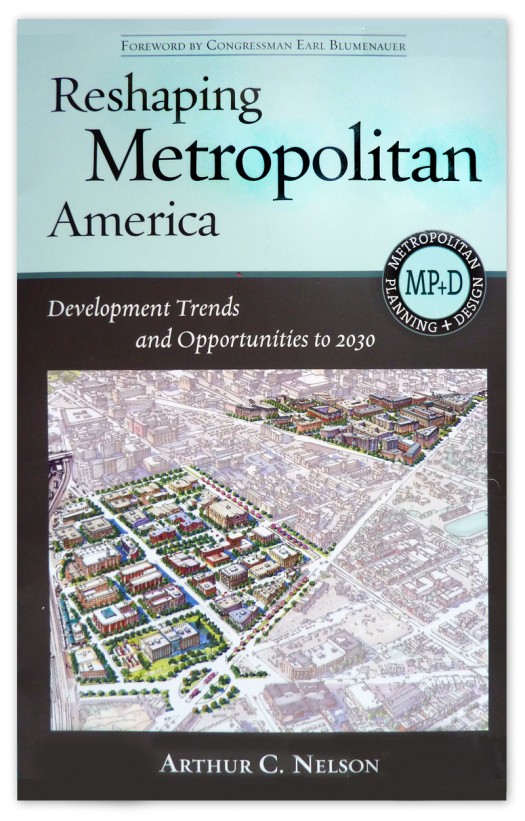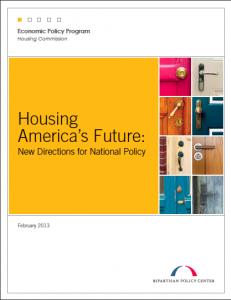A Placemaking Journal
New Game, New Rules? Guessing at the future of American housing
If it did nothing else, the last decade should have disciplined some of our enthusiasm for betting the house, literally, on long-term trends deduced from short-term experiences. Remember that little hiccup in the world economy when pretty much everybody bought into assumptions about ever-rising home values?
So where do I get off saying this: For the next 15 to 20 years we’re going to experience the most dramatic changes in American neighborhoods since the post-WWII era?
It helps that it’s not me making that argument. There’s a growing chorus of analysts smarter and more experienced in the housing economy than I am predicting a seismic shift – and worrying more than a little whether communities can meet the challenges.
Arthur C. Nelson, who directs the Metropolitan Research Center at the University of Utah, may the smartest and most experienced of the lot. Nelson and his grad students are the source of many of the most authoritative trend analyses used by real estate pros and planners. I borrowed liberally from them in posts like this one, this one and this one. Nelson’s new book, Reshaping Metropolitan America: Development Trends and Opportunities to 2030, summarizes and updates all the previous data. It’s a must-read for planners.

Here’s Nelson’s core argument:
Massive demographic shifts, changing market demand, rising energy costs and new economic realities for families and governments at all levels will impose an entirely different context for development and redevelopment than the one that has driven housing and neighborhood trends over the last half-century.
The movement of money in response to this altered context is staggering. “More than $20 trillion will be spent on reshaping America’s metropolitan areas between 2010 and 2030,” Nelson writes in the intro to his new book.
These marketplace demands and the demographic shifts will put some wind in the sails of advocates for more compact, walkable, mixed-use environments — at least in some places. The same goes for efforts to retrofit auto-focused suburban areas to be more pedestrian oriented and to provide a boarder range of choices for living, working and shopping — again, in some places.
I’m predisposed by my Smart Growth/New Urbanism advocacy to see major future impacts in most communities. But because we have learned a thing or two over the last decade about being sloppy with predictions, the “some places” qualification in the paragraph above is important. Nelson and others have made a compelling case for climate change in the nation’s housing markets. But that’s different from predicting with precision the weather conditions for real estate in any specific place.
I was reminded of this when I read a couple things about housing trends from some industry experts over the last couple weeks. The ULI’s February “Real Estate Business Barometer” reports national trend numbers for commercial and residential real estate that are so positive you want to declare the downturn definitely, absolutely over and start buying and borrowing again.
Yet Robert Shiller, co-founder of the widely respected Case-Shiller analyses of real estate trends, cautions in a Washington Post opinion piece: “The bottom line for potential home buyers or sellers is probably this: Don’t do anything dramatic or difficult. There is too much uncertainty to justify any aggressive speculative moves right now.”
The difference: The ULI report is a compilation of national numbers. Shiller and his colleagues keep an eye on shifts within individual real estate markets. The upbeat national trend is little consolation to folks with underwater mortgages in specific communities, just as the dramas of the downturn were avoided in other places where local economies dipped slightly, then quickly recovered.
But here comes another warning: Caution may not be enough. Shiller’s advice to potential home buyers to wait out the uncertainty, to not do anything “dramatic or difficult,” doesn’t work for public officials. If the big trends Nelson talks about are right, some pretty dramatic and difficult decisions await policymakers who find themselves stuck with the wrong tools for new tasks.

I’ve been struck by the way the Bipartisan Policy Center, which brings together some former congress members and other federal officials, is going on record with recommendations to reverse some of the federal policies that drove the sprawl that has proved so unsustainable in the new era Nelson predicts. The BPC’s report, published last month, can be downloaded here.
Given the Washington gridlock, however, the prospect of sweeping change by the feds is not a good one. And state legislatures are going to have so much on their plates that meaningful help for prospective home buyers, renters and developers is unlikely. Fortunately, regional and local governments have many of the tools they need to help themselves and citizens: More enlightened infrastructure planning, innovative approaches to affordable housing policies, choice-broadening zoning reform.
Smart Growthers and New Urbanists have been evolving best practices for leveraging those approaches for the last couple decades. I think it’s safe to predict they’ll be among the go-to resources for coping with the changes. But even if the impacts of the economic and demographic shifts prove to be wildly exaggerated, the effort to anticipate and respond to the changes will produce more livable places for more people.
If PlaceShakers is our soapbox, our Facebook page is where we step down, grab a drink and enjoy a little conversation. Looking for a heads-up on the latest community-building news and perspective from around the web? Click through and “Like” us and we’ll keep you in the loop.






